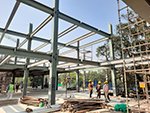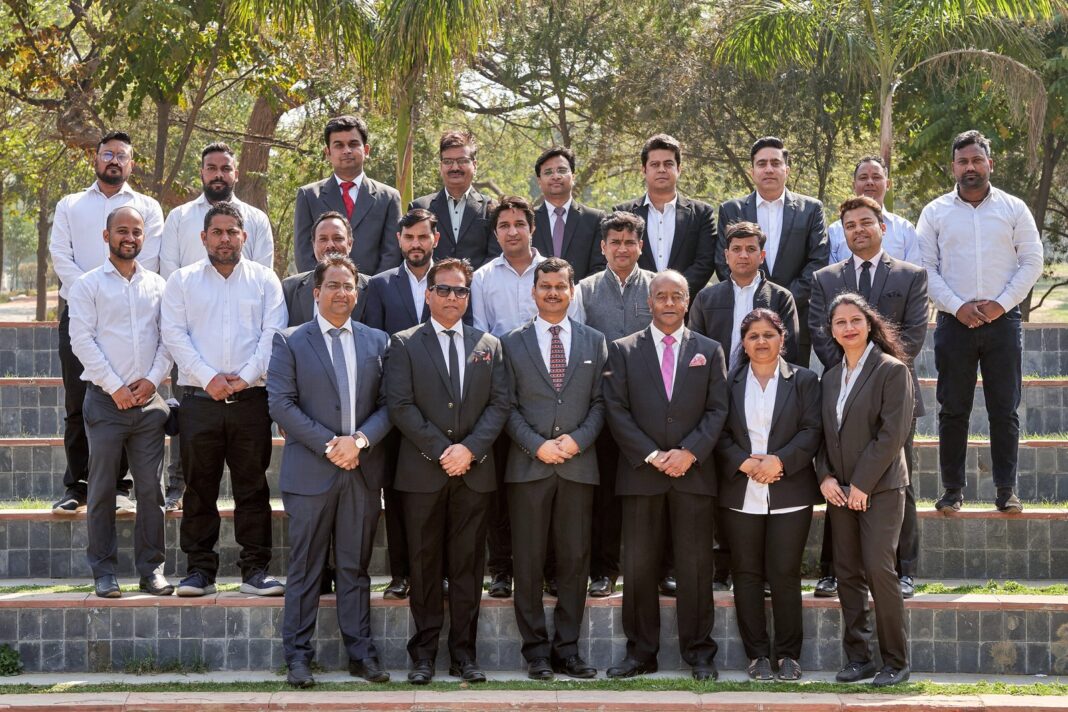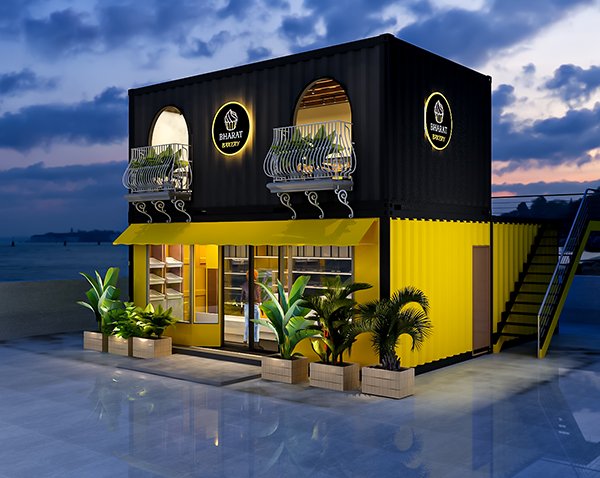His response to every set of unique challenges has been consistent and persistent over the years… He believes in the teamwork and collaborative effort that makes any successful design story and aims to establish a systems-driven organization that people take pride in. He has received several prestigious awards & his designs show synergy…

Amit Singhal, Director,
GPM Architects & Planners, sharing his opinions…
What are the major advantages of using steel vis-à-vis conventional materials?
Steel is an extremely reliable material, whether in terms of safety or design. It is lightweight and flexible, making it easy to work with in creative designs and to build on-site. With steel, a lot of construction work can be pre-fabricated, thereby saving a lot of time. The use of steel also enables us to design better earthquake-resistant structures.
How structural steel can be innovatively used in construction to provide design aesthetics and at the same time offer an economical solution?
Steel’s extreme flexibility and versatility make it a beautiful material to build with. From basic structures to complex and ornate designs, it plays an important role in shaping the aesthetics of a building. Designers prefer steel due to its design flexibility since it can be fabricated into custom-made non-linear shapes to adhere to creativity and design concepts, thus, allowing designers to innovate. Additionally, its impressive strength-to-weight ratio allows for a longer span between columns for more open-plan layouts, allowing for more versatility and flexibility in design. Steel, being a reliable material, also does not crack, twist, split, or rot, making design interventions easier.
What is your take on the variety of sections/grades provided by our steel producers for various demands of creativity?
Structural steel is a versatile type of carbon steel used in construction for its durability and strength. Being lightweight, malleable and flexible, steel is available in multiple shapes and sections such as H beams, T beams, Channels, C channels, H piles, L-shaped angles, Hollow sections, etc., adding to its versatility in design. In addition, the variation of grades available in steel allows it the adaptability and creativity that designers look for.



What trend are we going to witness in the next 5-7 years, as far as designing structures with steel is concerned?
Availability, timely delivery, and fast execution have slowly made structural steel the backbone of the real estate and construction industry. Having the exceptional advantage of quick construction time and optimizing the material cost, pre-engineered steel is chosen by many architects and designers today to replace conventional reinforced concrete, making steel an integral part of the future of the industry. Its additional benefits, such as reusability, freedom to expand the structure in strength and aesthetics, and exceptional flexibility, will make it one of the most widely used construction materials in the coming years.
What should be the strategy of the industry in promoting structural steel construction in India?
At a policy level, enabling the adequate supply of raw materials, ensuring sufficient infrastructure and logistics capacity and promoting R&D for the steel sector can boost structural steel construction in India. At the same time, facilitating the development of human resources and increasing raw material production is also crucial for the development of the industry.


Which are the iconic steel-specific projects executed by you?
SMS Hospital, Jaipur
Set to be the tallest hospital building in India, the SMS Hospital in Jaipur is an upcoming state-of-the-art healthcare center with a double-storeyed basement, G+23 floors with three service floors, and a helipad on the terrace. The hospital is designed to enhance the patient experience and reflects our ethos with innovative and sustainable design solutions to many complex issues.
Defense Office Complexes, KG Marg and Africa Avenue, New Delhi
The new Defence Office Complexes are designed to relocate the existing defense establishments and accommodate around 7,000 officials from the Ministry of Defence and the Armed Forces. Completed in 12 months during the pandemic, the project has saved significant time and resources with its quick construction. One of the defining features of these buildings is the use of new and sustainable construction technology called LGSF(Light gauge steel frame). To reduce the construction time, pre-engineered structural members such as structural steel columns and beams are used.


Kolhapur Domestic Airport, Kolhapur
Spread across 3900 sq. m., the new terminal at the Kolhapur domestic airport is designed for easy passenger circulation, catering to a footfall of around 300 passengers per hour. The project also includes the extension of an existing runway and a new Traffic Air Control Tower. The design reflects the historical significance of Kolhapur and embodies its rich culture in its architecture, promoting tourism and connectivity in the city.






